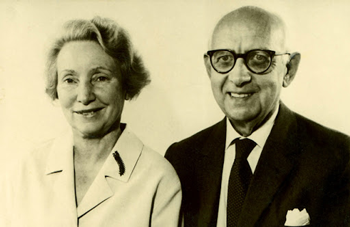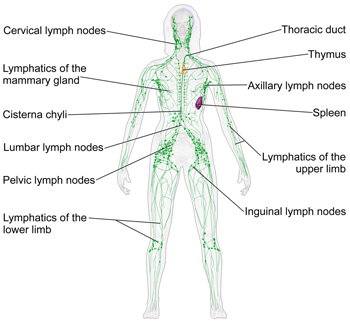MLD stands for Manual Lymphatic Drainage.
As per a deep tissue massage, MLD treatment works on the lymphatic system and not the musculoskeletal system.
This technique aims to boost the capacity and ability of the lymphatic system.
Manual Lymphatic Drainage history.
MLD is a technique implemented by Dr Vodder and his wife, Estrid Vodder, with the help of many other scientists and researchers.
Dr Vodder can be described as a visionary of the lymphatic system role.
He dedicates his life to the realisation of this technique.
Dr Vodder and his wife formulated a series of hypotheses on how the lymphatic system works, and how it is essential to speed up recovery from diverse conditions.

All their hypothesis, along the 20th century, were then confirmed and transformed in theory thanks to the works of many other scientists.
As per result, after their first few years of hypothesis formulation, in the early 20th century, they could start promoting their work and run seminars and classes about MLD all around Europe.
Nowadays, is in Austria in the village of Walchsee -Tyrol -Austria resides the Dr Vodder Academy –Lymphedema Clinic Wittlinger.
The Austrian clinic was founded in 1971, and since that, the MLD spread all around the world, with courses that are taught in any continent.
The Lymphatic System.
To understand the importance of this technique, let’s analyse the body’s anatomy and the lymphatic system’s role.
Indeed, for doing so, let’s compare the lymphatic system with the blood circulatory system.
- Firstly, the lymphatic system is an open system of “capillaries” (lymph vessels) and “veins” (pre-collector and collectors).
- Secondly, It differs from the blood circulatory system as it transports lymph, not blood, and is open and not closed.
- Thirdly, the lymphatic system doesn’t have a pump, as is the heart for the circulatory system. In fact, the lymphatic system, pushes the lymph around through a mechanism of osmosis pressure (at the lymph vessels system) and throughout an inner system of inner valves.
Furthermore, the lymphatic system has filtering stations: lymph nodes.

It is here where specific white cells live.
Indeed, the role of the white cells is to help fight back infections carried by viruses and bacteria.
Said so, the lymphatic system’s primary role is to collect waste.
This happens at two different levels.
At the superficial level (80%), where the lymph vessels are (lower dermis and the superficial zone of the subcutaneous tissue) and deep level of the body (20% below the deep fascia) return this waste to the blood system will then direct all the waste to the organs that clean the body, such as liver, kidney etc.
How the lymphatic system works.
So, our body is covered in skin, right?
Below the skin, before the fascia and muscle layers, we got lymph vessels (the equivalent of capillary for the blood system).
The lymph vessel spread on a vertical level all along the body in different concentrations.
As per role, the lymph vessel collects the Lymph-obligatory load, the waste and excess material the body doesn’t need.
Lymph-obligatory load is made from water, protein, lipids, exogenous substances, cells etc…
The collection of the lymph-obligatory load comes through a suction and osmosis approach.
The lymph obligatory load travels down to the pre-collectors from the lymph vessel.
Indeed, pre-collectors are slightly more significant than the lymph vessel
Furthermore, rather than spread along the undersurface of the skin, they travel deep down and pass the lymph fluid to the collectors.
As per result, the collectors that interconnect the lymph nodes transport the lymph-obligatory load to the blood circulatory system.
Another specification to look for is that the lymphatic system is divided into superficial and deep.
But we will look at this specification in the next blog post, where we will also talk about the watershed and body quadrant.
Manual Lymphatic Drainage compared to the massage technique.
So, now that we have a better idea of what the lymphatic system is and how it works, we can say that massage techniques such as Myotherapy, Thai Massage, Remedial Massage, or even Relaxation Massage are not the most indicated for helping the lymphatic system.
They still would improve its work, but as the lymphatic system sits right below the skin and works by light stimulation, the friction and pressure applied with these techniques would be too strong.
Even though no damage occurs to the lymphatic system when significant pressure is applied to it.